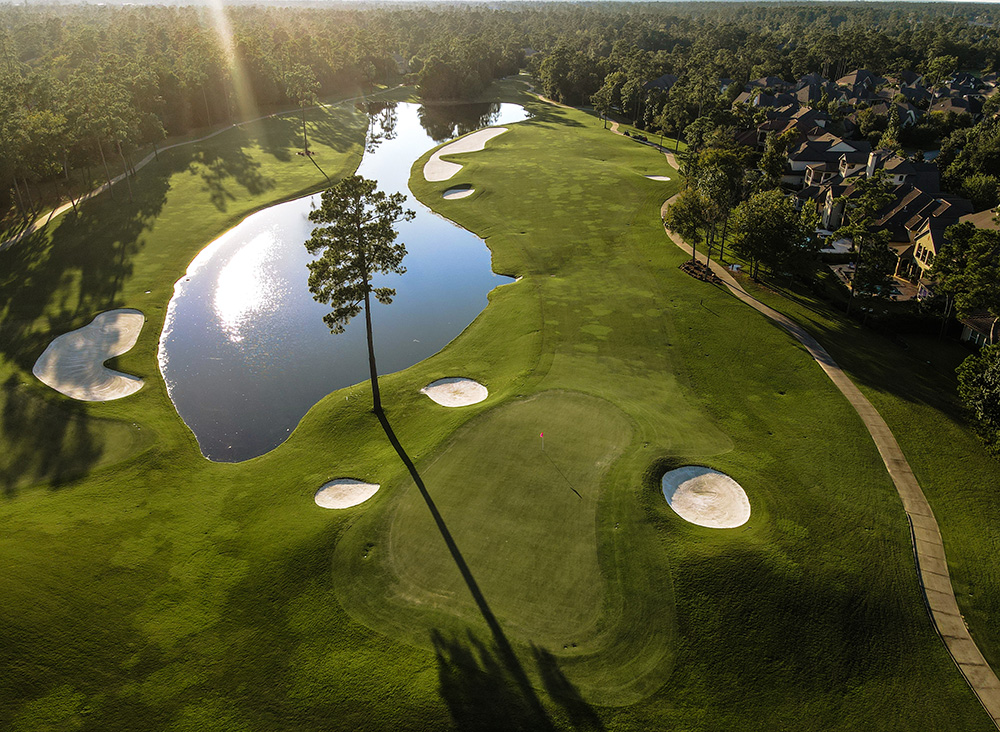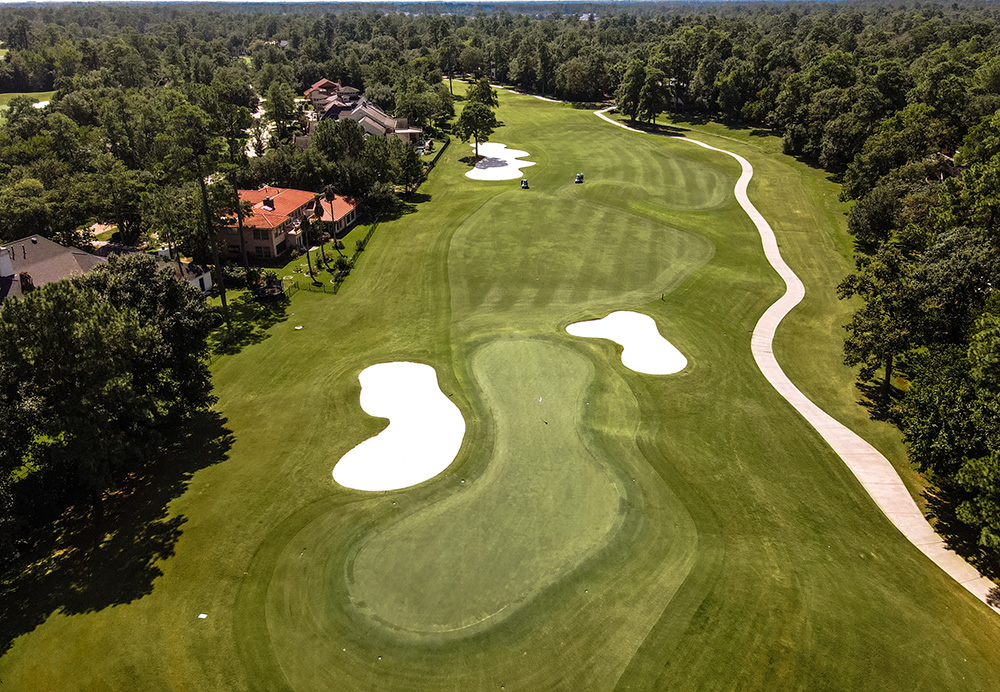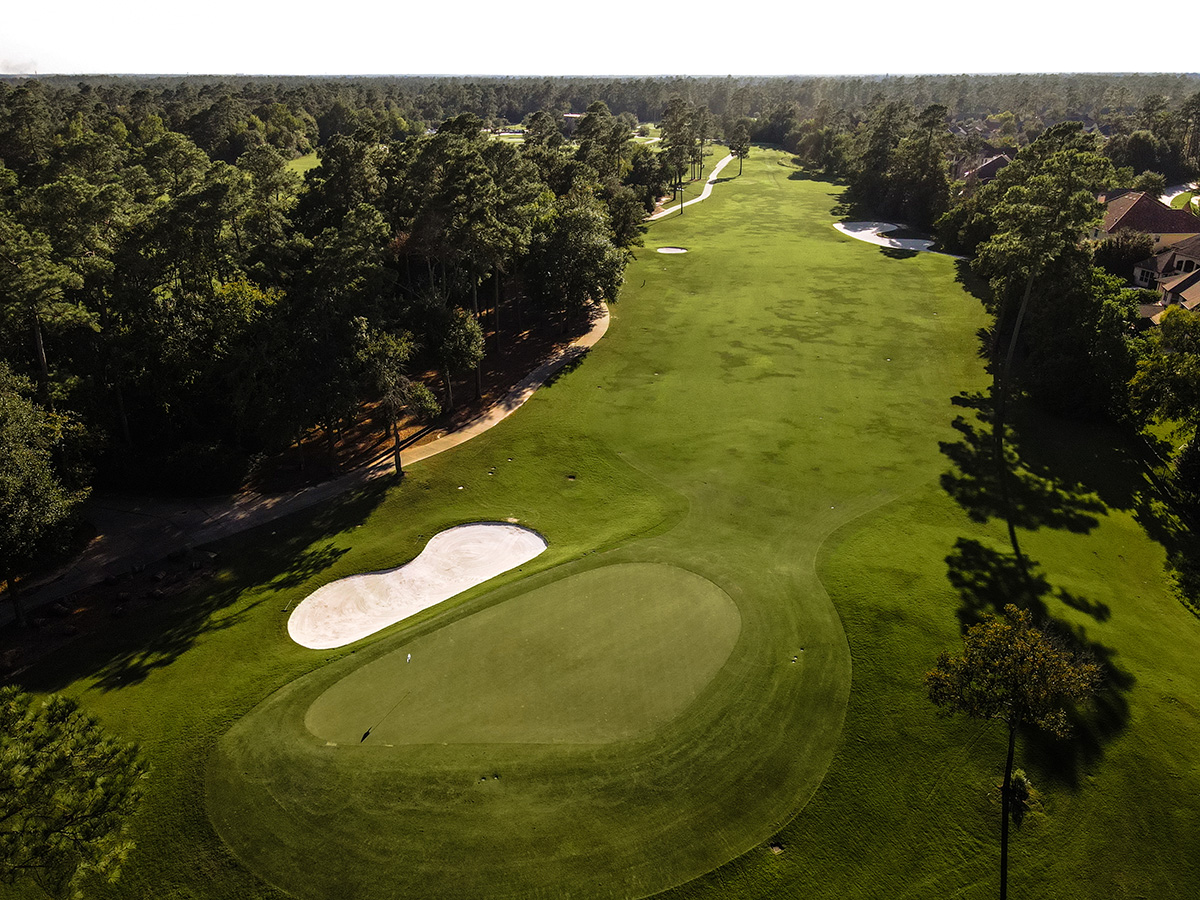 Celebrating the great history of the Tournament Course at The Woodlands Country ClubVenue will play host to PGA Tour Champions Insperity Invitational this spring
Celebrating the great history of the Tournament Course at The Woodlands Country ClubVenue will play host to PGA Tour Champions Insperity Invitational this spring
The Houston Open has been around since 1946. It’s been played on 10 different golf courses in its history, including River Oaks, Champions and its current site, Memorial Park Golf Course, where it’s now a fall event. But through the years, one could argue, it was never more exciting or glamorous than during the years it was conducted in The Woodlands, and more specifically, The Tournament Course at The Woodlands Country Club.
Raymond Floyd won the first one that was staged on The Tournament Course in 1985, hitting a 2-iron approach shot safely over the water on 18 to secure his victory. Curtis Strange would come back the next year and in 1988 to capture his second and third Houston titles. And who could ever forget the late, great Payne Stewart’s playoff victory in the 1995 Shell Houston Open over Scott Hoch, who led by seven shots with 13 holes to play? Hoch’s collapse included a double-bogey on the short par-4 17th, then he made bogey on the first playoff hole on the 18th.
“You can print it,” he said, after it was all over. “Hoch rhymes with choke.”
And while the Houston Open hasn’t been played on the Tournament Course at The Woodlands since 2002, you can still see high-quality tournament golf there. The Insperity Invitational, a PGA Tour Champions event set for April 29-May 1, has been on the Tournament Course since 2008. Many of the PGA Tour Champions players, such as local Jeff Maggert, Fred Couples and Bernhard Langer have competed in both the Insperity and the Houston Open at the Tournament Course. While Couples has won both the Insperity and the Houston Open, the latter was the first year it was held at The Golf Club of Houston, so no player has won the Houston Open and Insperity in The Woodlands.
The Insperity serves as a reminder of what was arguably the Houston Open’s glory years in the 1980s and 1990s. That period coincided with the event being played on new style of course — The TPC at The Woodlands, which was actually known as the East Course when it first opened in 1978, but was licensed by the PGA Tour as a Tournament Players Club course in 1985 and renamed until it became the Tournament Course after the TPC license expired in 2004.
 With packed skyboxes behind the 18th green, large crowds on the mounds on the finishing holes, the galleries were immense. Television coverage was more limited than it is today, which might have made the tournament seem even bigger for the few hours it was on TV.
With packed skyboxes behind the 18th green, large crowds on the mounds on the finishing holes, the galleries were immense. Television coverage was more limited than it is today, which might have made the tournament seem even bigger for the few hours it was on TV.
Roland Thatcher, who played on the PGA Tour and the Korn Ferry Tour and its predecessors for 17 years, grew up in a house right next to the course. He recalled those days fondly.
“It was my first exposure to golf and a golf tournament in person,” said Thatcher, who though he played in the Houston Open eight times, never got to play it when it was at the Tournament Course at The Woodlands.
“As a kid, going to see it for the first time was taking in the spectacle of it all,” said Thatcher. “To see something like that was on your television was a really cool experience. And as a growing adult the respect you have for it the golf course really grows because you have equity in it.”
Indeed, Thatcher, who took his first golf lesson from TPC at The Woodlands pro Bob Brown when he was just 10 years old, then later worked at the course cleaning carts and filling divots, has come full circle. His last three years as a tour player, he represented The Woodlands C.C. on his bag. And after he stopped playing a few years ago, he decided to become a club pro, working through the PGA of America certification process. He spent three years at 54-hole Bentwater Country Club in Montgomery, eventually becoming the club’s director of golf. Earlier this year, he got an opportunity to become the director of golf at The Woodlands CC. Since he grew up there (his parents still live in The Woodlands) and has been raising his own family in there, it was a perfect match.
“Honestly, it’s the only job that would have made me leave Bentwater,” he said. “I was very happy there.”
 Of course, even though he never played in the Houston Open at the Tournament Course, (all of Thatcher’s Houston Open appearances came at the Golf Club of Houston), he has played the course countless times. He will tell you the front nine is harder than the back nine, that it’s a shotmaker’s course that doesn’t favor one particular kind of player. And the finishing stretch is still one of the best in golf. With water on the majority of holes, this is a course that has withstood the test of time through its first 40-plus years.
Of course, even though he never played in the Houston Open at the Tournament Course, (all of Thatcher’s Houston Open appearances came at the Golf Club of Houston), he has played the course countless times. He will tell you the front nine is harder than the back nine, that it’s a shotmaker’s course that doesn’t favor one particular kind of player. And the finishing stretch is still one of the best in golf. With water on the majority of holes, this is a course that has withstood the test of time through its first 40-plus years.
The late, great team of Robert von Hagge and former PGA Tour player Bruce Devlin designed what was then known as the East Course specifically to play host to a PGA Tour event, which meant not only was it created to test the world’s best, but it also created great sight lines for the spectators. So it fit right in with the soon-t0-come TPC Sawgrass PLAYERS Stadium Course and the TPC layouts that followed. The only surprise, perhaps, was that von Hagge was never commissioned to do another TPC course.
The East Course/TPC/Tournament Course was also one of the first of notoriety to feature an island green, especially on a par 5 (the famous par-3 17th at TPC Sawgrass did not open until 1981). It’s always been a great risk-reward hole from the right tees. It begins an interesting stretch on the back nine with two par 5s (the 15th is the other) that presented scoring opportunities, two tricky par 3s (the 14th and 16th) and two great finishers.
The 17th is a sub-400 yard par 4 with a narrowing landing area that most players will play to with a hybrid or even an iron. The next shot is a sharp left turn over water to a peninsula green well protected by bunkers. Many players have shot themselves out of contention on this hole.
The 18th is a daunting, 445-yard par-4 with a lake that comes into play for most of the approach shot. Many players choose to lay back a little to take the water out of play off the tee, leaving a long shot that’s mostly carry to an expansive green.

default
Both of these holes, as well as others, have changed over the years. The 17th used to have an oak tree hanging over the left side of the peninsula. It has since died. The 18th used to have more bunkers behind the green. A renovation by Carlton Gipson and Maggert in 1996 resulted in the removal of several bunkers throughout the course, perhaps none more noticeable than on the first hole.
“That used to be an island green,” recalled Mike Smelek, of Hockley-based von Hagge, Smelek & Baril. “It used to be completely surrounded by sand.”
Indeed, the original design feature a gigantic bunker that completely surrounded the first green. The shots out of that bunker could get pretty dicey, but maintenance of that bunker was labor-intensive.
Smelek, as well as partner Rick Baril, didn’t actually join Hagge until 1981, so he didn’t work on what was then the East Course, but through conversations with von Hagge, whom he considered a great friend as well as colleague, he has intimate knowledge of the development on not only that course, but the two nines that von Hagge added to the original Joe Lee-designed course that would be split up to become the North and West courses at The Woodlands C.C. (Those courses were later renovated and renamed the Oaks and Pines as they became part of another group of courses. Recently, they were brought back as North and West to The Woodlands C.C. as fully private to give the club five golf courses. The other courses include the 27 holes of the Palmer Course as well as the underrated Player Course.)
Around the time von Hagge and Devlin were finishing up the East Course, he was also working on another gem, Walden on Lake Conroe. The Tournament Course at The Woodlands and Walden are among von Hagge’s very best work, and that’s saying a lot since von Hagge designed more than 250 golf courses in 20 countries.
“He was always pushing the envelope,” Smelek said, “always trying new things.”
By Mike Bailey